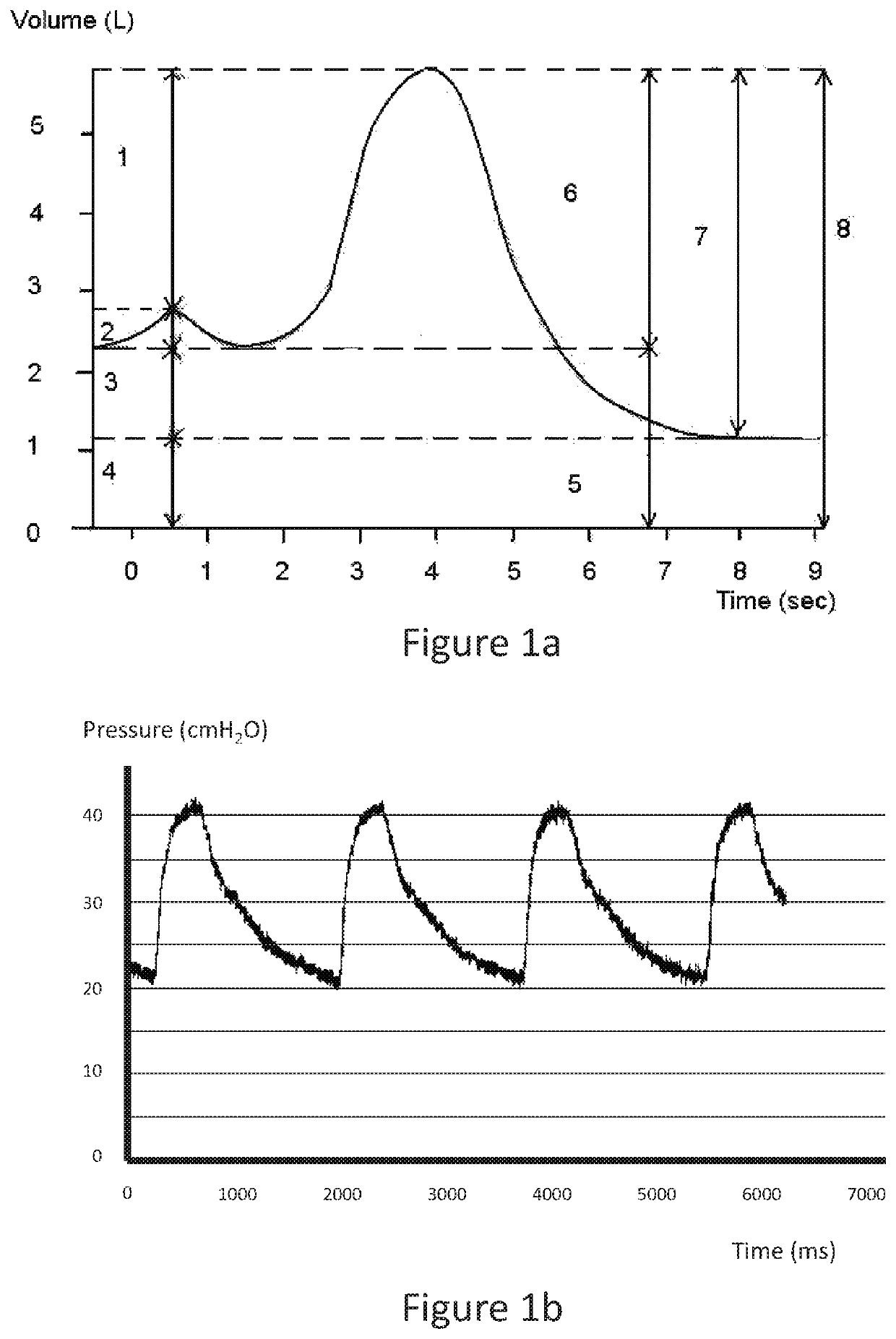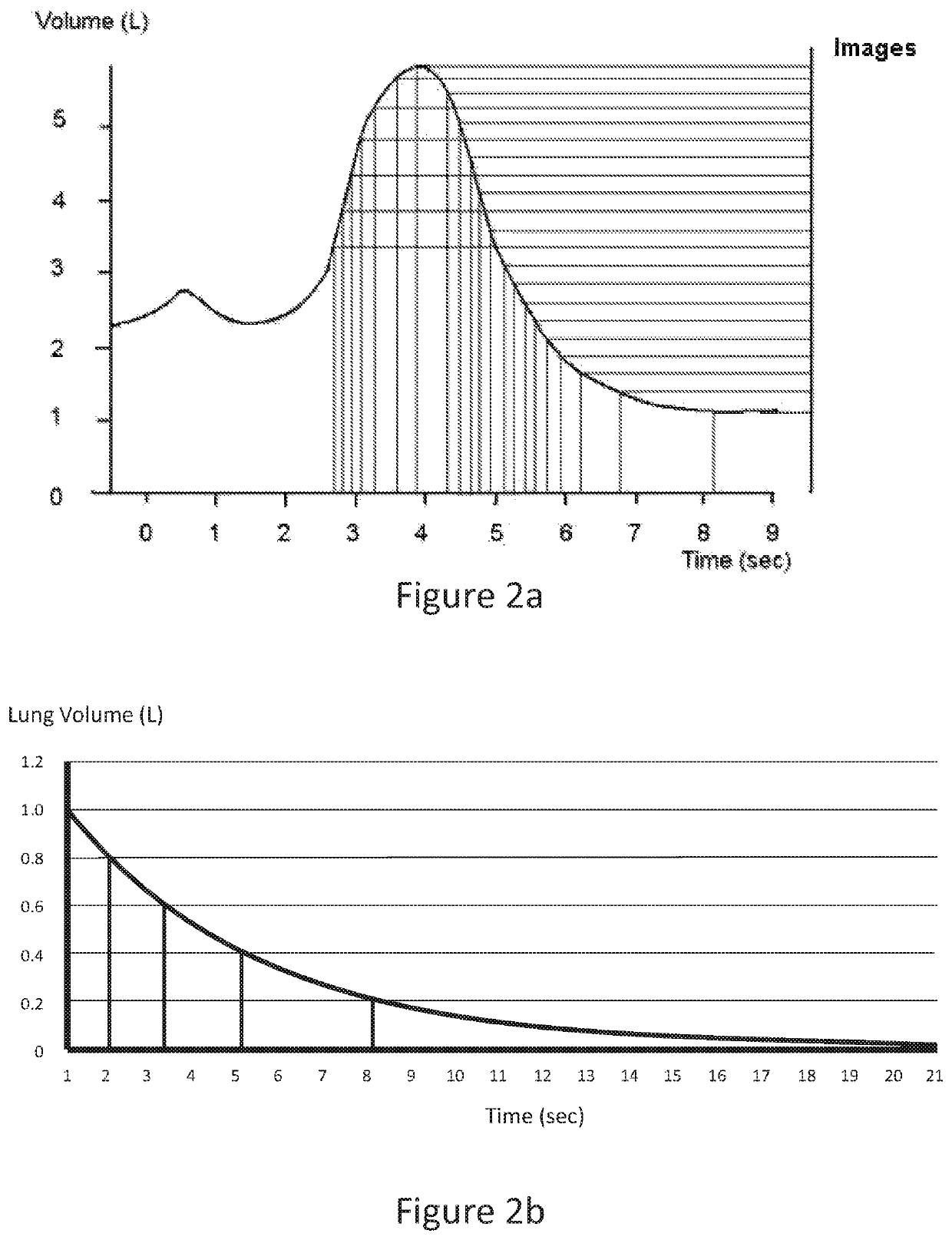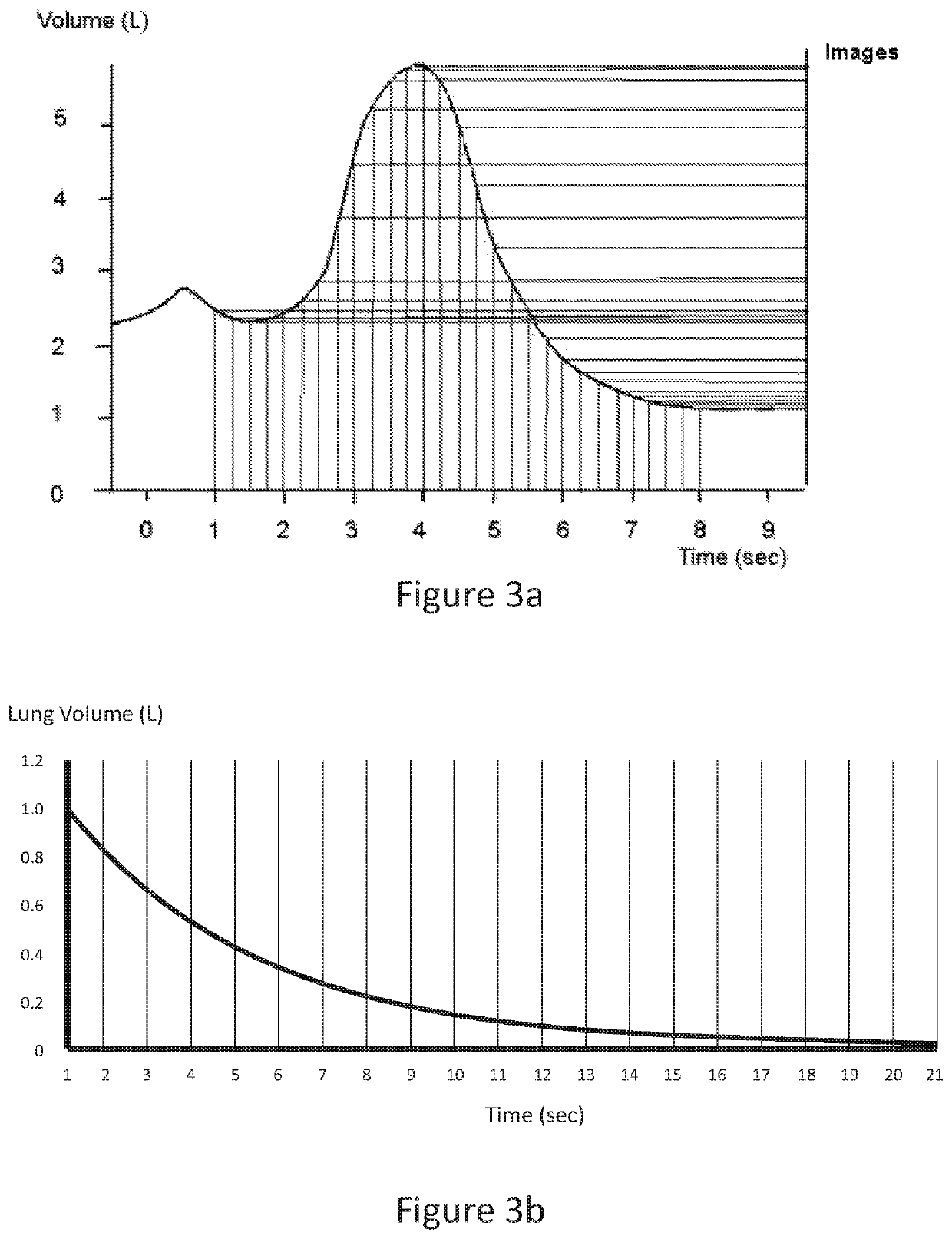Method of imaging motion of an organ
a technology of organ motion and imaging method, applied in the field of imaging, can solve the problems of poor temporal resolution of ct, inability to detect changes using conventional two-dimensional x-ray imaging, and limitation of the use of dynamic lung tes
- Summary
- Abstract
- Description
- Claims
- Application Information
AI Technical Summary
Benefits of technology
Problems solved by technology
Method used
Image
Examples
Embodiment Construction
[0086]FIG. 1a is a plot of lung volume (litres) versus time (sec) during inspiration and expiration of a human lung. The plot illustrates inspiratory reserve volume (IRV) 1, VT 2, expiratory reserve volume (ERV) 3, residual volume (RV) 4, functional reserve capacity (FRC) 5, inspiratory capacity (IC) 6, vital capacity (VC) 7, total lung capacity (TLC) 8
[0087]FIG. 1b is a plot of pressure (cm / H2O) versus time (ms) for inspiration and expiration of a human lung. The flow of air into and out of the lung can be correlated with the change in volume of the lung as shown in FIG. 1a.
[0088]In the past, images of organs that change volume, such as the heart, blood vessels or lungs have been recorded at the fastest imaging rate possible with a constant time between images.
[0089]With reference to lungs, this was an attempt to capture the fast motion that occurs during the beginning of the inspiratory cycle and the beginning of the expiratory cycle. FIG. 3 is a plot of lung volume (litres) agai...
PUM
 Login to View More
Login to View More Abstract
Description
Claims
Application Information
 Login to View More
Login to View More - R&D
- Intellectual Property
- Life Sciences
- Materials
- Tech Scout
- Unparalleled Data Quality
- Higher Quality Content
- 60% Fewer Hallucinations
Browse by: Latest US Patents, China's latest patents, Technical Efficacy Thesaurus, Application Domain, Technology Topic, Popular Technical Reports.
© 2025 PatSnap. All rights reserved.Legal|Privacy policy|Modern Slavery Act Transparency Statement|Sitemap|About US| Contact US: help@patsnap.com



